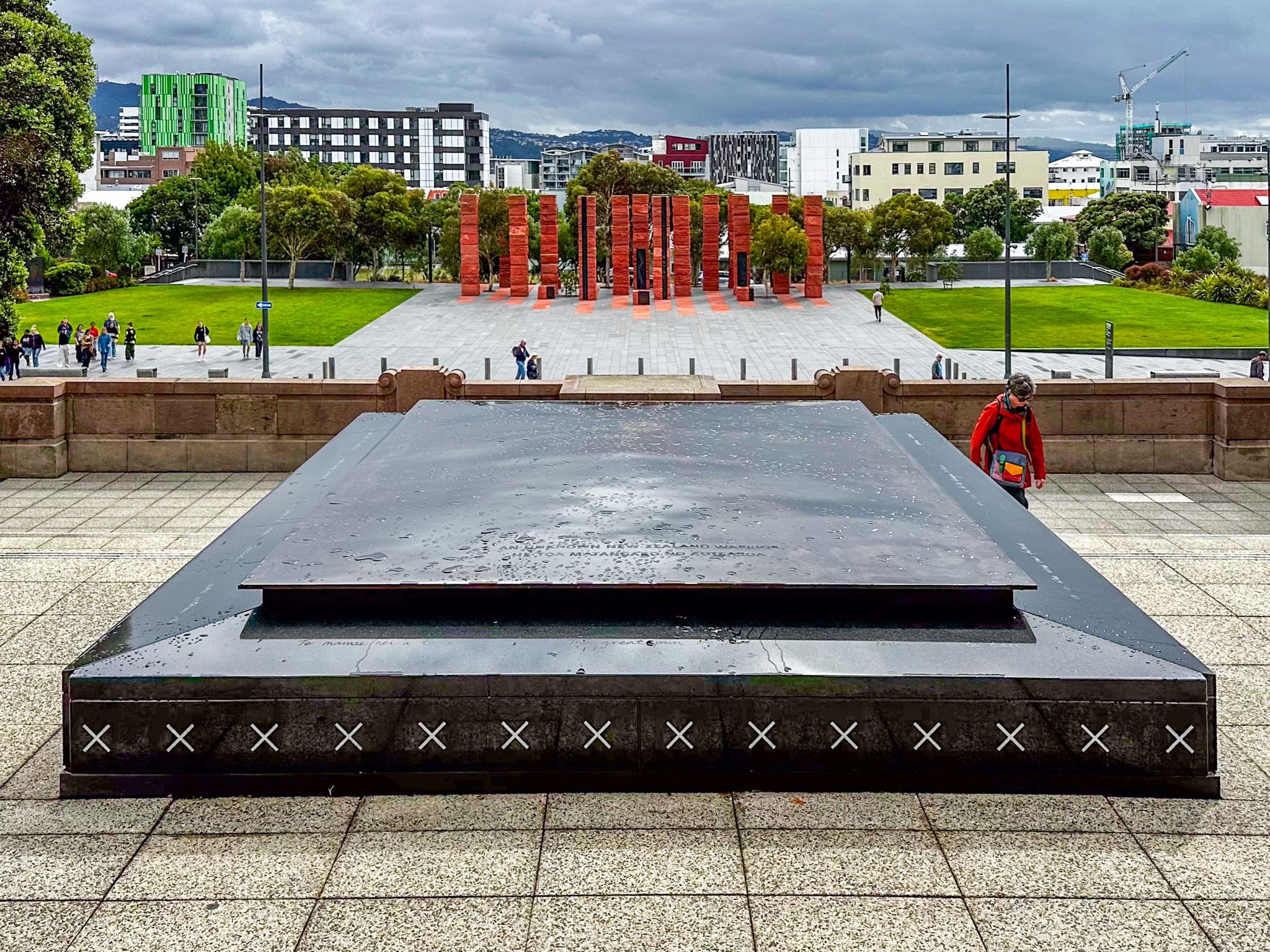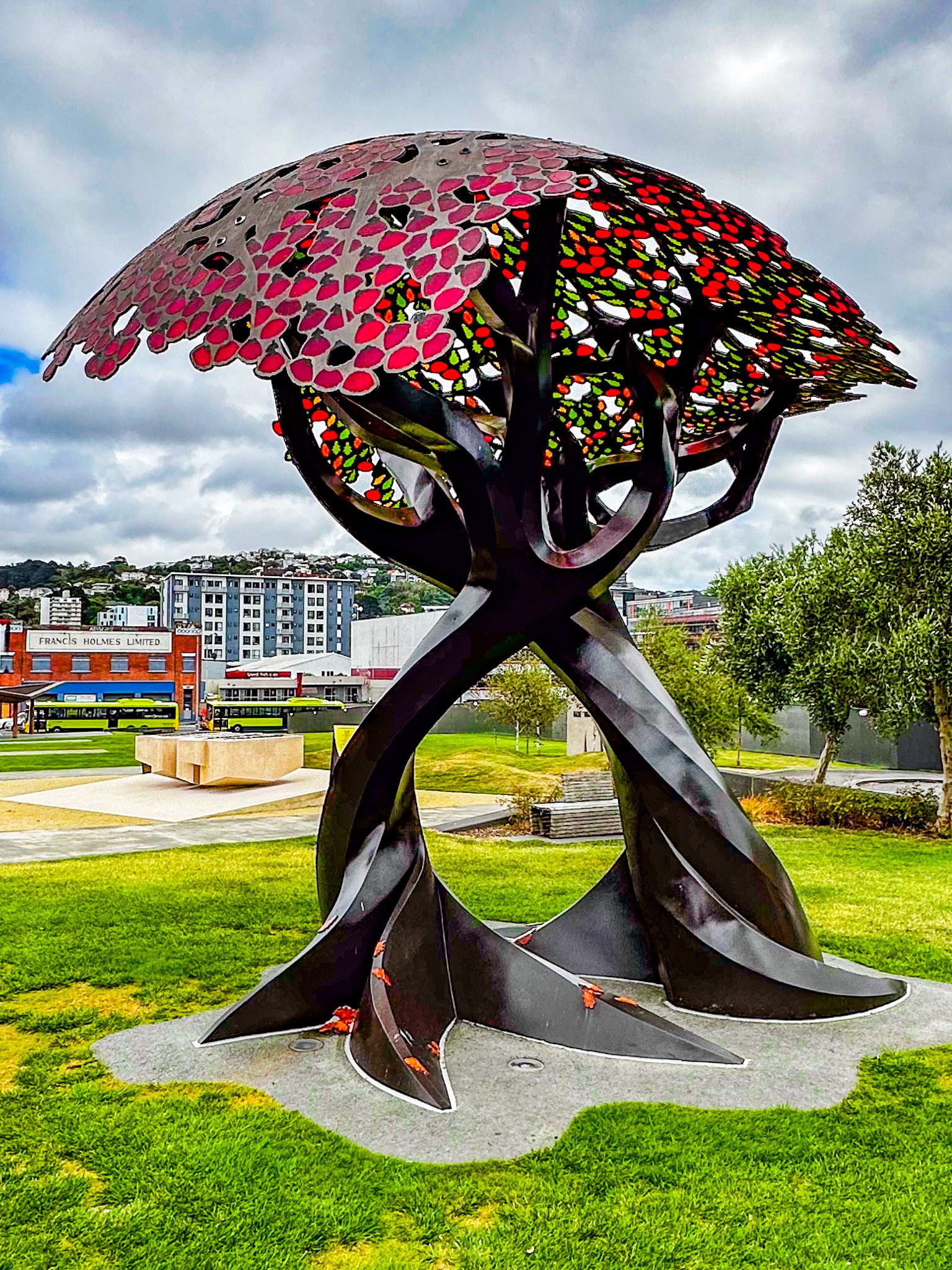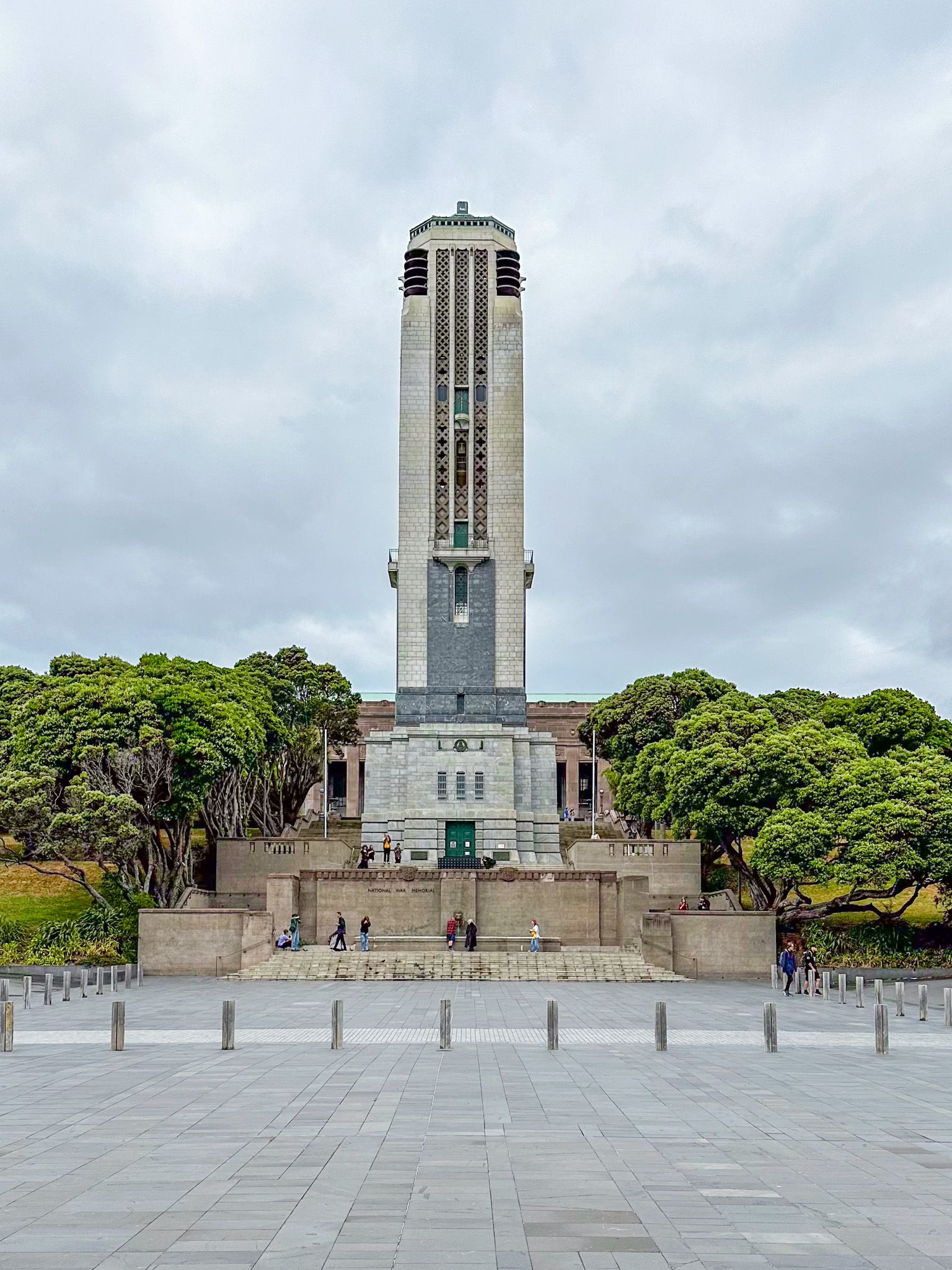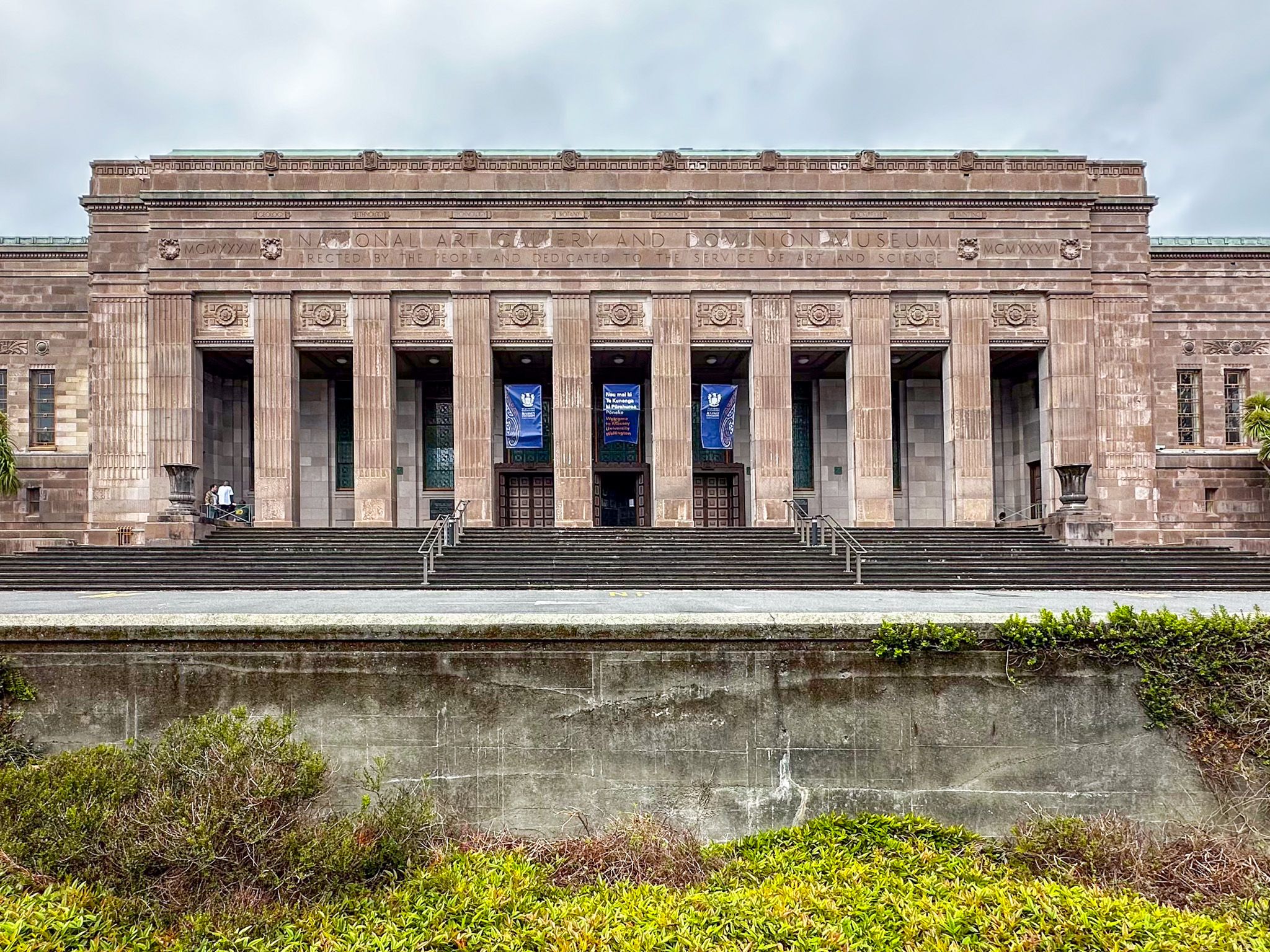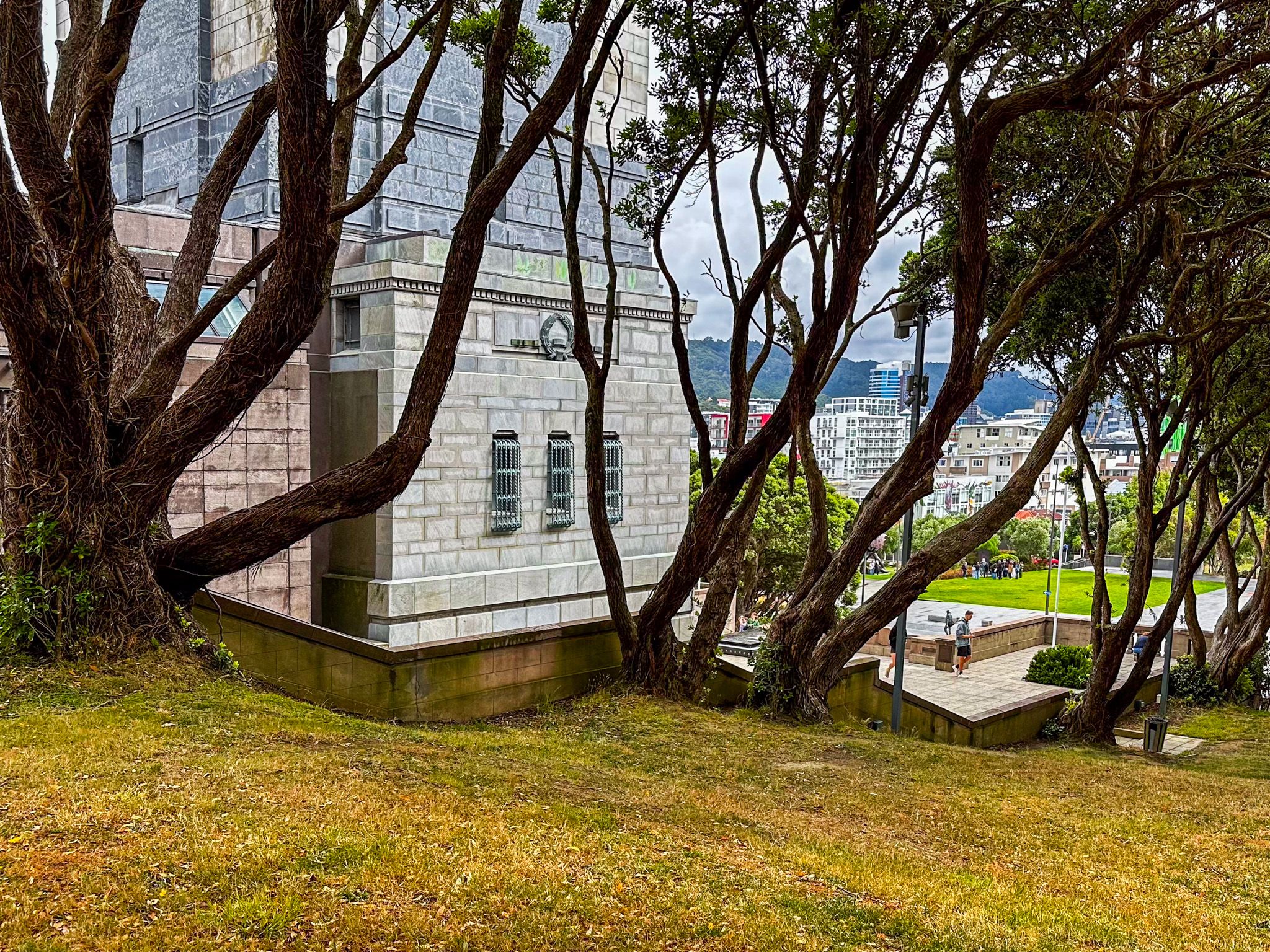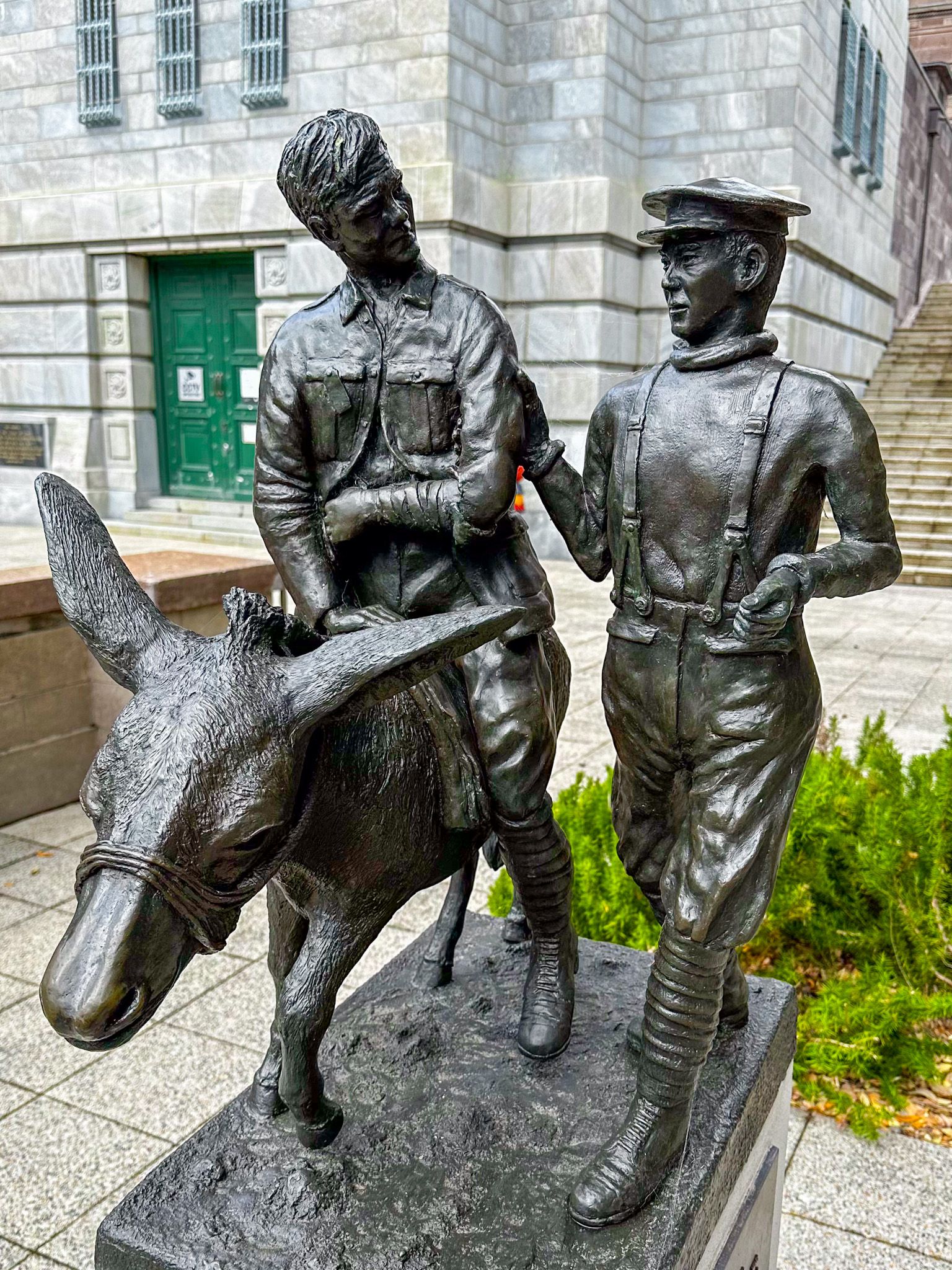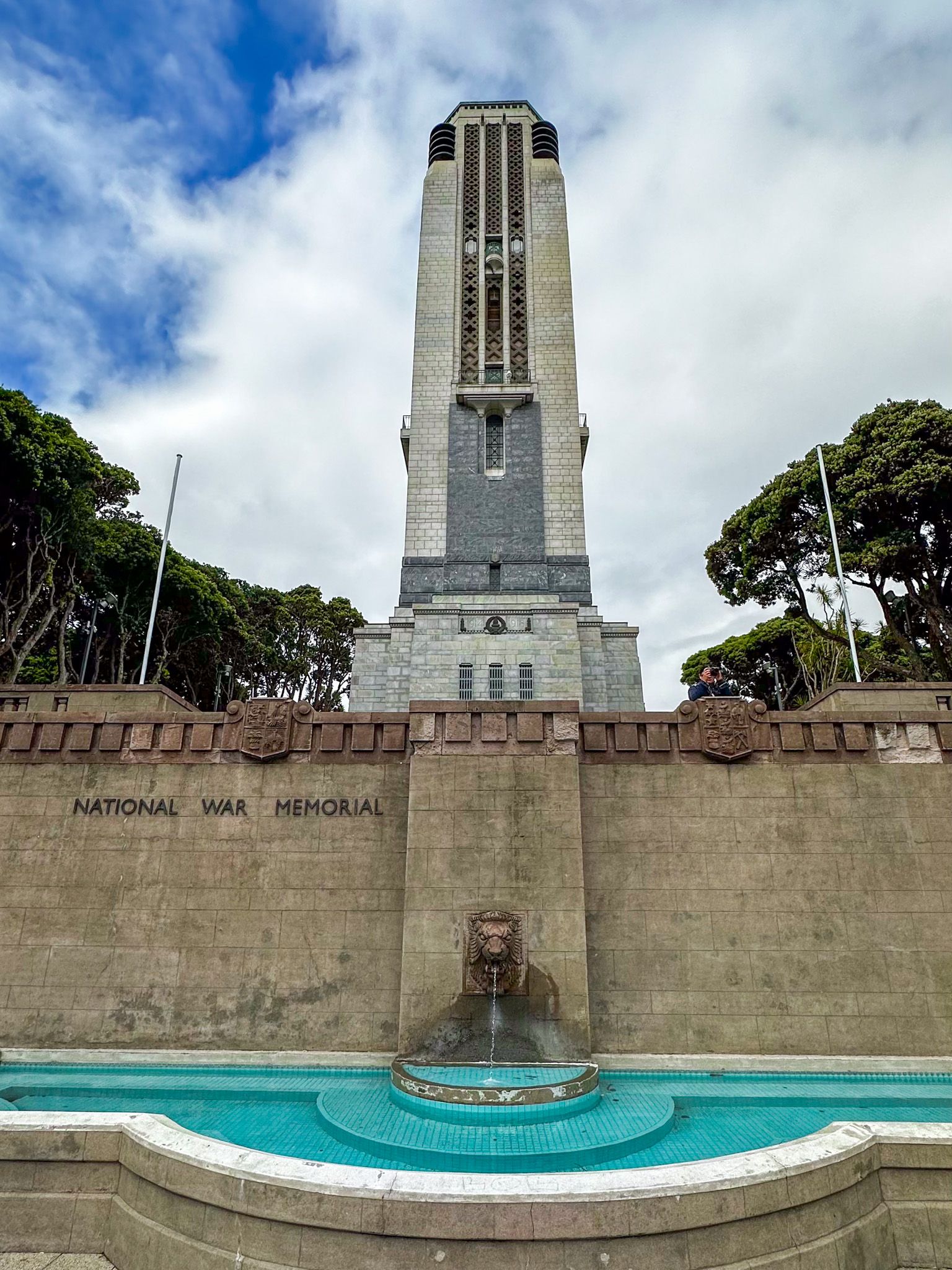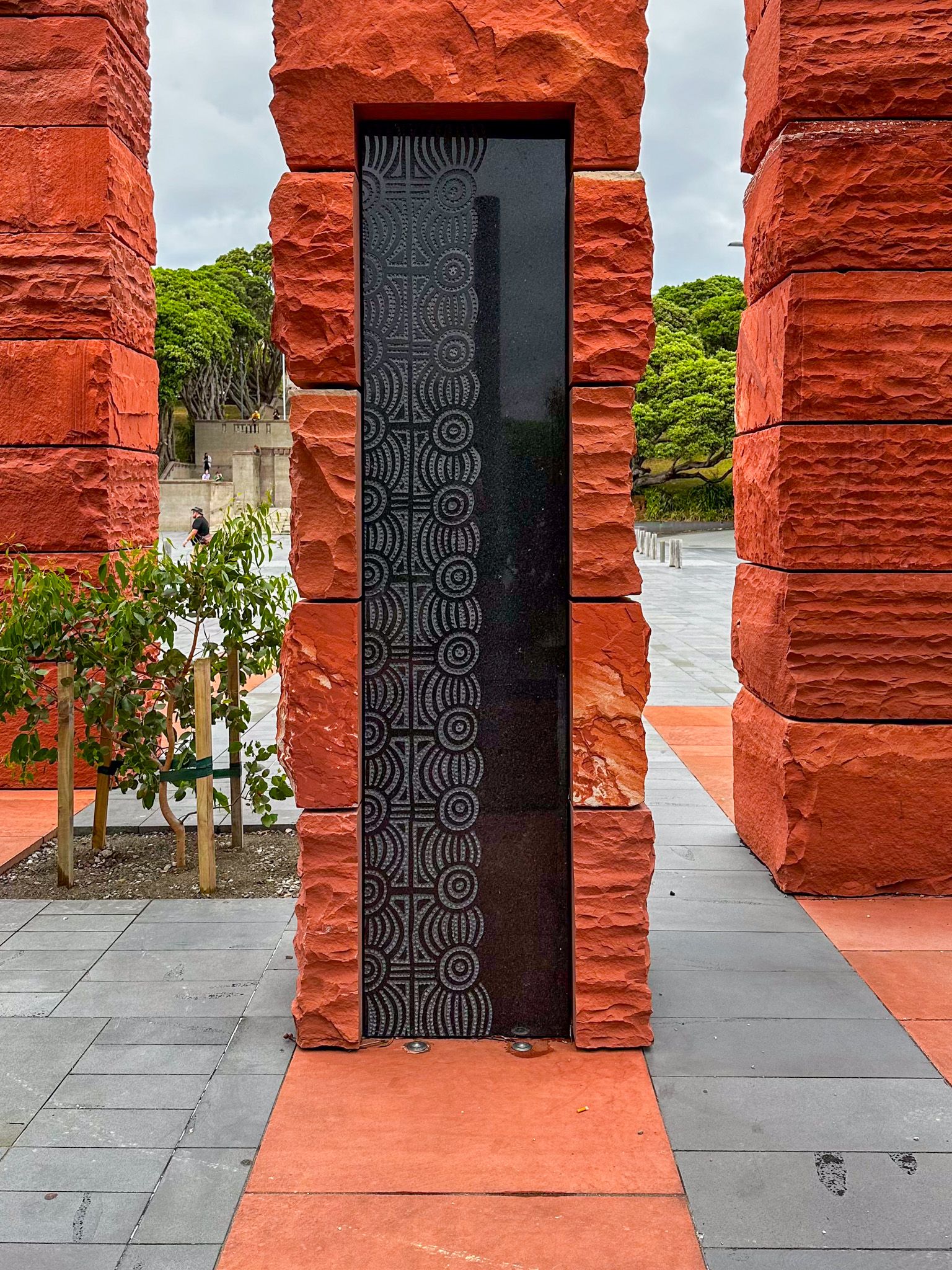Pukeahu National War Memorial Park, also known as Pukeahu Park and National War Memorial, is on Buckle Street in the Wellington suburb of Mt Cook. The park has many elements, so wander around to discover them all.
The first feature is the hill, which the first Māori inhabitants. Ngāi Tara called the hill Pukeahu, which means “sacred hill”. The hill also had commanding views to the coast, and Te Āti Awa established a pā there after migrating into the region from Taranaki during the Musket Wars of the 1820s and 1830s. After European settlers acquired the area, they called it Mt Cook. The hill was used as a military base during the Huitt Valley Campaign of the 1840s, then as a prison before ultimately being set aside for a memorial park.
The original memorial consists of a Hall of Memories and a 50-metre tower Carillon running up the side of Pukeahu Hill. These were built to commemorate WWI, and the tower was completed in 1932. The Carillion contains 49 bells funded by public subscription, with preference given to families of the fallen and then to various military and community groups. Behind the carillon on the top of the hill is the Dominion Museum building, which was completed in 1936. Te Papa displaced this in 1998, and it is now part of Massey University.
Immediately in front of the Hall of Memories is the tomb of an unknown New Zealand soldier. This was created for the 2015 centenary of WW1. To the left of the tomb is a statue of two soldiers and a donkey. This is based on a photo from 1915 of Private John Simpson leading a donkey with a wounded soldier through Shrapnel Gully, Gallipoli.
The park's main area is at the hill's base and contains several more memorials. The largest is the Australian Memorial, commemorating the ANZAC military relationship that dates back to Gallipoli. It has fifteen red sandstone columns with various inscriptions and artworks by Aboriginal and Māori artists. The memorial was opened in April 2015 by Australian Prime Minister Tony Abbott and New Zealand Prime Minister John Key.
Various other memorials were added over 2017 and 2018. The most stunning is the United Kingdom Memorial, Whakaruruhau. Weta Workshop designed the monument with the assistance of students from Massey University and British Wimbledon College of Arts. The design is based on intertwining a Royal Oak (British) and a Pōhutakawa (NZ) topped by a single stunningly colourful canopy.
Also present are a US Memorial, a Belgian Memorial, with a similar sculpture in East Flanders, Belgium, a French Memorial, a German tapestry that the artist, Stephen Schenk, said is "a reminder of the untold misery and horror, … of this inconceivable catastrophe of the twentieth century". There is a Turkish memorial where the words of Atatürk, the first president of Turkieye, are cut into a plaque. Attaturk led the Turkish army against the British and ANZACs at Gallipoli. There are several memorials around Wellington - Wellington Cathedral, Te Papa and Ataturk Memorial Park - that record his profound words of reconciliation.
In 2019, yet another plaque was added for the victims of the 1918 Influenza Pandemic, which killed around 9,000 New Zealanders. A large bronze sculpture of a conch to honour the service of Pacific Islanders in the world wars and later conflicts was added in 2021. It is called Te Reo Hotunui o te Moana-nui-a-Kiwa (The Deep Sigh of the Pacific).
Several of the memorials are west of the Australian Memorial, while others are to the east on the other side of Tory Street.
